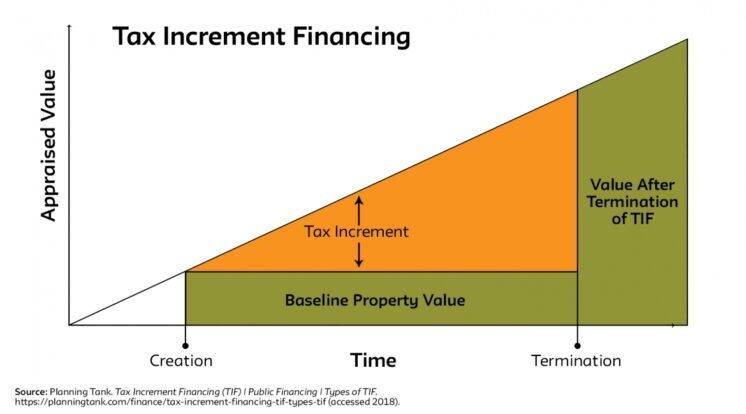Duluth Mail Bag: Potholes, TIF, Snowplow GPS and More
 As a two-time Duluth city councilor, now in my final year of service, one of my goals is to make city government more accessible, or at least help citizens become more informed. I figure there are many Duluthians who would like some simple answers to some simple questions. I learned in school that if there is something you don’t understand it’s likely there are many others who feel the same way. Hence the idea of the Duluth Mailbag column.
As a two-time Duluth city councilor, now in my final year of service, one of my goals is to make city government more accessible, or at least help citizens become more informed. I figure there are many Duluthians who would like some simple answers to some simple questions. I learned in school that if there is something you don’t understand it’s likely there are many others who feel the same way. Hence the idea of the Duluth Mailbag column.
I won’t divulge who is asking the questions, but I’ll answer them in this format about once a month. Feel free to put a question in the comments for next month’s “Duluth Mailbag” or tweet me via @Hobbs_Duluth or email me at hobbsforduluth @ gmail.com.
Also, if you want to have a longer conversation, you can sign up for a 45-minute cup of coffee through my 100 Cups of Coffee project.
OK, here we go!
Potholes are already bad; when will they be fixed?
There are two types of pothole patches — cold mix and hot mix. The cold mix does not require heating for its application and is used when the outside temperature is below 40 degrees. Cold mix is not very durable; a rain or snow event will wash cold mix out of a pothole. This is a short-term solution to a pothole during the in-between season.
When the weather is above 40 degrees, hot mix is used. Hot mix is heated up and adheres to the surrounding pavement, creating a longer fix for a pothole than cold mix. We are desperately waiting for hot mix plants to open to fill potholes. St. Paul has already started using hot mixes. In the meantime, if you want to read about what happens at a hot mix plant, MinnPost has a fascinating story.
Why doesn’t the city have GPS in its snowplows?
The city installed GPS on snowplows this winter. They will be available for the public to use for tracking snowplows next winter. The reason for it not being public this winter is the city is working on an adequate delay in relaying the information to protect plow drivers. We are avoiding a scenario where they can be tracked in real time where someone could stalk a plow driver. Stay tuned!
Does the city have a snowplowing system? Where can I find it?
The city has a snowplowing system. There are three priority levels — main arterials (plowed within 36 hours after snowfall subsides), priority two (residential streets open to one lane, plowed within 48 hours) and priority three (alleyways, opened and made passable within 56 hours). Now, if the snow stops and another snowstorm moves in within a 48-hour timeframe, we reset the snow removal plan back to priority one. A map at duluthmn.gov shows what tier your street falls under. I understand that your road is the most significant road to be cleared, but there are 530 miles of roads with neighbors who think their road is the most significant.
Why doesn’t the city use plows on pickup trucks to move snow?
Passenger trucks from 1-ton to half-ton are widely used by contractors in parking lots, driveways and other commercial applications. However, most larger snow removal companies utilize wheel loaders, backhoes, graders and other construction equipment for snow removal. It is very easy for some to interpret these vehicles as a viable option for municipal operations as there are plenty of them to see around town. However, to plow a city’s infrastructure our equipment needs to be much more robust in terms of construction, weight, additional plows and the ability to distribute sand at a designated rate. Unfortunately, by design, passenger vehicles are not construction equipment. They do function as a commercial snowplow but are not a realistic and sustainable solution intended for municipal operations.
How do snow emergencies get called?
The city of Duluth will consider the following before declaring a snow emergency: future weather forecasts, timing, precipitation and accumulation. There is no formula for declaring a snow emergency. As Minnesotans know, no two snow events are alike. The director of Public Works & Utilities works with city staff and partners to declare a snow emergency.
What roads will be repaired this year?
The roads that are slated to get extensive repair beyond just pothole patching can be found at duluthmn.gov. If your road isn’t on that map, it does not mean potholes won’t be filled. See above about the pothole filling process! Here is also a link for roads repaired in 2022.
What is tax increment financing?
Great question! The Minnesota Legislature established tax increment financing as an economic development tool. It authorizes cities to utilize additional property taxes paid as a result of a development to finance a portion of the development costs. There is a stringent “but for” test, meaning that without the use of TIF the project would not be viable. TIF is also not a payment to the developer; there is no cash or check exchange. Unless noted TIF districts sunset after 25 years.
There are several types of TIF Districts.
- Economic Development – Projects that increase employment and preserve or enhance the tax base.
- Housing – Development of low- or moderate-income housing.
- Redevelopment – Improvement and redevelopment of blighted areas.
- Renewal/Renovation – Projects that meet a blight test (This type of district carries a 15-year maximum term.)
- Soils Condition / Environmental – The site contains pollution and the cost of cleanup exceeds a certain amount. This district has a 20-year maximum term.
Limitations of TIF development are that costs must be paid at the beginning of the development. The increased property taxes (increments) are not paid until later and, then, only in modest amounts (relative to the development costs) spread over years. This creates an imbalance or mismatch between costs and revenues. TIF traditionally overcomes this mismatch by issuing bonds. These bonds pay for:
- Development cost (e.g., site acquisition).
- Interest on bonds until increments are received. The need to pay these interest costs on borrowing, pending receipt of increments is commonly called capitalizing interest. The need to capitalize interest means that increment flows must be larger to pay off this component of the cost.
Before 1986, municipal bonds were routinely used in TIF financing. These bonds were usually tax-exempt, providing a lower interest rate to the city and developers. The 1986 tax reform made it harder to issue tax-exempt bonds for this purpose. This took away much of the incentive for the local governments to borrow in anticipation of tax increments. Minnesota now does not use bonds. Developers pay the costs and are reimbursed as increments become available. This approach (called “pay-as-you-go” financing) shifts the “capitalized interest” costs to the developers. Duluth absorbs the cost by advancing its money until it can be reimbursed in increments. If the city accepts lower or no interest on these advances, it uses these funds to assist or subsidize the development.
Why do cities have boulevards? Why not remove them for snow removal?
Cities use boulevards for several reasons, including traffic calming, tree planting and safer walking. If Duluth removed all boulevards to widen streets, traffic speed would increase. Drivers will drive at the speed streets are designed for. The price of road maintenance will also increase. It would also remove a place to put the snow, leaving more of it piled near, or directly on, the sidewalk. If there were no boulevard a city plow, in theory, could come back to clear the sidewalk by “raising the blade.” However, snow removal would take twice as long. It is possible but there are tradeoffs!
Why do avenues on Duluth’s steepest hills have vehicles stop via a light or stop sign?
Traversing down hills in Duluth during winter can be harrowing. If there were no traffic control measures (stop signs/lights) drivers would likely drive faster downhill than they currently do. It also would create a nightmare for traffic heading east/west on the streets. Drivers are responsible for driving in a safe manner that the conditions allow for.
Recommended Links:
Leave a Comment
Only registered members can post a comment , Login / Register Here














3 Comments
David Beard
about 1 year agoaluminumpork
about 1 year agocosmojr
about 3 weeks ago